|
On a cool summer’s afternoon, you decide on a comfortable jog in the mountain. Less than a kilometre into your run, you suddenly step into a hole emerging out of nowhere. With a nasty twist and a jerk, you drop down to the ground with a sharp pain shooting from your ankle. One hour later, you are lying on the couch with a blue, swollen foot elevated on a pillow. The icy sharpness and burning of the cold pack tightly wrapped around your poor lower leg makes you feel even more sorry for yourself. Your son’s crutches from last year’s rugby injury are on standby right next to you, and you will soon be hobbling back to the fridge to put the ice pack back to prepare for another torturing session in two hours’ time. But you know that this is what you need to do, right? In acute injury follow the RICE principle: Rest, Ice, Compression, Elevation. Surely this should resolve in no time then?
Well… no. In fact, you may be doing more harm than good to your recovering ankle. New research is bringing about a total revolution at how we treat acute injury. To understand the newer rationale, we first need to understand what happens when we hurt ourselves. What happens to the body during injury? Acute injury brings about tissue damage, and the body’s protective and recovery mechanisms immediately kick into place. Fighter cells are sent to the area to remove and digest dead tissue cells, and to kill off any potential foreign objects that may threat the body. Tissue healing starts immediately, and more oxygen and nutrients are needed in the area. All of this brings about a rapid increase of blood flow to the injured area, causing swelling, increased temperature and redness – all signs of acute inflammation. We need to realise that inflammation is a good thing. Without it, normal recovery will not be able to take place. How can we help our bodies to recover optimally? Firstly, we should not interfere with the body’s natural inflammatory process. Allow for normal regulated blood flow to the area, keep it moving and keep the tissue loaded. Secondly, we should respect pain and use it as an indicator of how much our bodies are able to do. Movement and relative loading of the joint is important, but should not be done to an extent where more tissue damage will occur. So what’s wrong with the use of ice and crutches…? Ice slows down the blood movement to the injured area, thereby delaying the process of inflammation and healing. Ice exposed directly to the skin often also causes damage to the skin and tissue. Although it may improve your pain on the short term, it causes stiffening of the surrounding joints, making movement more difficult and painful. Complete immobilisation by means of crutches takes away normal joint movement. Healing tissue is dependent upon normal joint movement in order to produce the correct type of fibres, aligned in the correct direction. Movement of the injured part also stimulates normal blood flow to the area, thereby assisting with inflammation and healing. Important: crutches are not altogether bad. If you can only take partial weight on the foot without pain, you should be using crutches to make sure that you have an optimal available movement. What is the new direction of thought? The acronym RICE (Rest, Ice, Compression, Elevation) is popularly replaced by MEAT (Movement, Exercise, Analgesics, Treatment). Let us look at this new kid on the block in more detail:
Is this a final goodbye to RICE? No, not necessarily. Fractures, ligament tears and many other serious injuries still needs to be splinted and immobilised; ice applied once or twice directly after injury will still help to ease the pain; and compression stockings will still assist those with chronic swelling of the legs. Crux of the matter is that, as health care practitioners and patients, we should shift our focus from simple recipe following to critical thinking. Careful evaluation is necessary, after which appropriate treatment modalities should be selected that will best address the specific injury. So whether using ice, exercise, pressure or painkillers, always think about why you are doing what you are doing. At the end of the day, treatment should always rest on the big rule of medicine: first do no harm.
0 Comments
Why do joints crack
What is “bamboo spine”?
Ankylosing spondylitis (AS) is a lifelong disease which causes inflammation in the spine on an ongoing base. It varies in severity from patient to patient. In the worst (but not all) cases, it can cause extra bone growth on the spine, leading to severe stiffness and immobility, often creating a forward-stooped posture. Who is at risk? Men and women of all ages can get AS, but the disease is more common in males in the age group of 17 to 45 years. AS also has a strong genetic link and may run in families. What are typical symptoms?
How is it diagnosed? A diagnosis is made on the grounds of medical history, clinical symptoms, blood tests, X-rays and/or MRI. Cause and cure? The cause of AS is still unknown. Although no cure has been found, methods exist to slow the course of disease. Treatment focuses on pain management and maintenance of mobility and functionality. Regular visits to the rheumatologist and physiotherapist is important. What is the prognosis? AS is a slow-progressing disease. The course of disease varies greatly from person to person. Some patients only experience mild lumbar pain from time to time which is easily resolved with the use of anti-inflammatory medication. In other people, symptoms can become much worse with time, eventually leading to disability and postural deformity. You can lead a normal life! Although symptoms of AS can cause great discomfort at times, it is a condition that can be well managed with the correct medication and regular physiotherapy. Many patients with AS have excelled to great heights. Famous sport stars with AS include Australian cricketer Michael Slater, professional surfer Shane Wehner, US powerlifter Randy Gallan and British golfer Michael King. Source: www.spondylitis.org
 You know the feeling when your pubic pinchers just won’t co-operate, and a sudden sneeze or giggle leaves you red-faced and uncomfortably wet…? Think it’s only you? Think again. Recent studies have shown that up to 49 % of women suffers from stress incontinence.Unfortunately, even in today’s streetwise society, a shocking amount of ladies accept this as part of normal aging that nothing can be done about. Guess what – there is hope! There is no need for you to be a victim of incontinence. Understanding why The pelvic floor muscles support and hold all the organs in your pelvis and abdomen. Think about it as a sling stretching from your tailbone to your pubic bone. During pregnancy, a massive amount of weight from your growing uterus create constant pressure on these muscles, causing them to stretch out and weaken. Pregnancy hormones will also cause the ligaments in the area to become lax. With childbirth, the already taut muscles need to stretch even more, with many ladies ending up having them torn or cut as well. Then, as we age, our muscles loses elasticity, and keeping in wees and winds become more of a challenge. Menopause brings about hormonal changes that contribute to the problem. When this situation worsens, a prolapse may occur, and organs may literally start to protrude from, or “hang” out of the body. What can be done? The pelvic floor muscles can and should be retrained and strengthened. Unfortunately, once you have a prolapse, surgery is often the only option. It is therefore a good idea to prevent rather than to cure, and by doing regular pelvic floor strengthening exercises, you should be able to avoid surgery, and improve your quality of life considerably. For a proper assessment and assistance, visit a physiotherapist with special training in women’s health. Apart from advice and rehabilitation, they also use physical modalities to help improve your control and muscle strength. Like with any other muscle, the more you train it, the stronger it will become and the better your results will be. Who should proceed with caution? If you struggle with a spastic bladder, difficulty to urinate (micturition), experience pain during intercourse, or have any other chronic medical condition in your pelvic area, you should visit a healthcare professional to assist and monitor your retraining. How do I contract my pelvic floor muscles? The female pelvic floor has three openings: the ureter, the vagina and the anus. You should be able to contract these three separately, and then in conjunction. Contract the ureter by imagining “pinching” back urine. (Important: This should only be done once or twice when doing your pelvic floor exercises, especially if you struggle with a spastic bladder.) To contract the anus, you can imagine holding back a wind. The most important is the contraction of the vagina, as this is the area that takes the most strain. Contract by visualising the centre of your pelvic floor closing up and lifting towards your belly button. Simultaneously, visualise two magnets fixed on the insides of the palpable pelvic bones in the front waist area, and imagine them gently “pulling” towards each other. Hold this contraction for 5 to 10 seconds, and relax. If you can manage all contractions of the ureter, vaginal and anal areas separately, do them consecutively, starting from the tailbone, through to the pubic bone. Hold the contraction for 5 to 10 seconds, and relax. …and then what? Do the combined contraction as often as possible. Make it part of your daily routine, do it every time your phone rings, or when stopping at a red traffic light, or when hitting the “print button”, whatever it is that you do on a regular basis. You do not only strengthen the muscle itself, but also teach the brain to contract these muscles involuntarily in the long term. If you struggle with occasional incontinence, pelvic floor strengthening can make a dramatic difference in time. For mommies-to-be, a stronger pelvic floor will heal much quicker after birth. And for those of us that have already given birth – get them pelvic floors firmed up now!
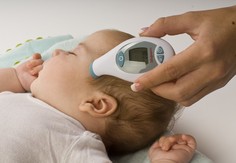 Winter has officially arrived! Unfortunately, so has a whole bunch of germs bugging our airways. Children are much more susceptible – as a new parent, I found that out the hard way. A bronchiolitis turned pneumonia recently sent my 3-month old straight into ICU in no time – an experienced that I would prefer never to have again...! As parents, we want to be vigilant for any threatening signs of disease, but are also (much too often) afraid of being paranoid. How should I know if my child’s cough and runny nose is simple a minor ailment, or if I should seek medical attention? Below are some symptoms to watch out for. The more of these occurring in combination with your child’s apparent flu, the more serious it may be. Fever: any fever recurring after fever medication has worked out is a sign that the body is fighting off something significant. Especially in infants younger than 3 months, rather visit the paediatrician sooner than later. Don’t wait too long with older babies either – even a mild-degree fever can lead to convulsions if not resolved timeously. Lethargy: When your quaint little busy-body toddler is suddenly just a passive heap of misery and grumps, something is wrong. Ill infants may be sleepier in general, and more irritable when awake. Appetite issues: A usually munchy munchkin who refuses to eat or drink, may indicate illness. Apart from the risk of dehydration, your little one will not gain sufficient energy for his body to resist the disease. In toddlers, differentiate between true symptoms and possible manipulative behaviour. Faster breathing rate: Babies breath faster and often more superficial when having airway trouble. To make sure, count the amount of breaths that your healthy child takes in a minute while she is sleeping. This will give you a standard to compare it to when she is ill. Just remember, babies’ normal amount of breaths per minute will decrease with age. Paleness: An unusual pale colour should get you on alert. No need to run to the doctor if there are no other symptoms though – just monitor her closely. If uncertain whether you are imagining paleness, take a photograph and compare it to one taken quite recently. Poor sleeping: A child who struggles to breathe, may not be sleeping well. If the sleeping pattern is more disturbed than usual, be on alert. Nasal flaring: This usually occurs in the more advanced stages of airway disease. Seek medical attention if you haven’t yet done so. Rib recession: Rib recession refers to a sharp inward pull of the muscles on the sides of the thorax/abdomen, just below the ribcage when breathing – you would almost see a “dent” when she inhales. This is also a sign of respiratory distress, and should be monitored by a medical practitioner. Blueness around the mouth: If you see a blueish colouration around your child’s lips, this may indicate an oxygen deficit. Also check her tongue, fingernails and toenails for a blueish colour. Seek medical attention. Painful coughing: This may be indicative of a number of conditions affecting the upper- or lower airway conditions. If your child cries with pain when coughing, have it checked out. Remember, early intervention is key – the sooner a disease is picked up and treated, the better. Rather be grateful for an “unnecessary” trip to the doctor, than regretting not going in time. And above all, trust your motherly instincts – they are more than often spot-on.
Perhaps the most irritating factors about sports injuries is the need to rest. Whether amateur or professional, those who are serious about their sport find it very hard to stay away from the track or trail for long time periods. Many still firmly believe in the no-pain-no-gain-theory, and force themselves onwards, regardless of pain. Unfortunately, if you do not allow yourself enough good quality recovery time, proper healing is unlikely to take place, and the chances for re-injury in future are just so much bigger. But then when is a good time to return to sport after injury?
First, you need to analyse your motivation to get back on track. Why exactly is it so important to you? Are you afraid of deconditioning, picking up weight or for the deterioration of your health? Is it perhaps the social and recreational component? Or is your sport a source of income, and being unable to participate adds financial pressure? Whatever your reason, it is important to outweigh the risks and benefits of when you return. Going back too soon might mean that you miss the rest of the season due to re-injury, or you may be delaying proper healing over the long term. Returning to sport greatly depends upon the nature and severity of your injury. Fractures or total ligament tears will obviously need certain amounts of time to heal as determined by your medical professional. Strains and sprains will take less time, but should also not be underestimated in severity. Also, the level at which you are participating will determine your required level of conditioning before you can return. It is important to bear in mind the stages of inflammation and recovery. 1) Acute inflammatory phase – This is what happen immediately after the injury to about 72 hours after the injury. It is an inflammatory response that is causes pain, swelling, redness and warmth around the injured area. This is your body’s way of protecting itself. The swelling causes stabilization in the area, just like when you can’t move your neck after a car accident. The area gets warmer because blood is being pooled in the area that actually causes the swelling. There are also chemical signals to have “search and debris from the injured tissue or bacteria that may have made its way into the area that might cause an infection. This reaction does not take place in a chronic type might cause an infection. This reaction does not take place in a chronic type injury, like the pain in a person’s wrist after typing too much. 2) Repair Phase – this is when the inflammation has gone down and your body begins to repair the injured area. Your body will begin to lay down collagen to replace the damaged tissue structure. Oxygen and vitamin C are necessary to aide in the collagen formation. This process last from 72 hours to six weeks after the injury. The structure of the collagen is unorganized at this point. 3) Remodeling Phase – once the collagen has been regenerated in the second phase of healing, it is not is an alignment that will be very capable of withstanding any stresses placed on it. The collagen is similar to sticky glue at first. It needs to be molded in certain alignments in order to be able to perform the functional capabilities of the tissue it is replacing. This phase is largely one of an improvement in the quality, orientation and tensile strength of the collagen. This phase last from 3 weeks to 12 months (some research is showing up to 2 years).
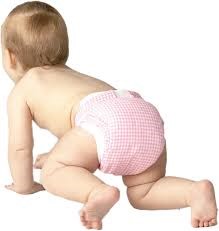 Crawling is the one milestone you do not want your baby to skip. Although to us crawling may seem pretty simple, we often underestimate the effect that this action has on brain and movement development. Crawling is important for the development of muscle strength, balance, coordination, fine motor development, vision, spatial understanding and problem solving, all aspects important for walking later on. Research has also shown that school-going children who have skipped crawling generally struggle more with sports involving the upper limb, ball sports, mathematical concepts and copying work from the blackboard. Crawling can develop any time from 6 to 10 months of age (for premmies, remember to correct their actual age). Your child will not attempt to crawl unless he has mastered stable sitting yet. He may not necessarily crawl in the traditional fashion, but may instead prefer bum shuffling, crawling backwards, leopard crawl, bear walk (on hands and feet) or crab crawl (“upside down”). Do not worry if he is a bit slow to move, or if he prefers to motor himself around in a more non-conventional way. Do seek medical advice, however, if your child uses only the one side of her body to attempt propelling himself forward, or if he makes no effort at all to move his body around purposefully by age 10 months. How can I help my baby master the art of crawling?
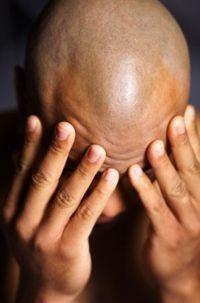 Headache is one of the most common and debilitating conditions around. Any veteran of headaches will know that once it has properly kicked in, your entire system struggles to operate effectively. While it is a much researched topic, many of the causes of headaches are still being debated upon. Possibilities for the source of headaches are endless, ranging from tension to tumors, sport and sex. Where do we start eliminating? Below is a list of often-missed factors that may be responsible for the hammer pounding in your head. These can all be addressed by simple lifestyle alterations, which may just help for those headaches never to return again.
SO WHEN SHOULD I WORRY ABOUT MY HEADACHE? The following are pointers that may indicate a more serious reason behind your headache. Seek medical help if any of these occur:
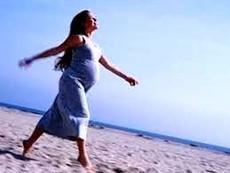 Yes, we know you are big and uncomfortable, your back hurts and you are tired at the end of the day. But guess what, instead of adding even more strain and effort, mild exercise may actually turn all of these around for you! A couple of good reasons for moms-to-be to get moving: Control weight gain: Weight gain in pregnancy is inevitable – and important! However, excessive weight gain will leave you with some unneccesary flab after labour. Regular moderate exercise now, will save you a massive lot of effort in weight loss later. Improve fitness and heart health: During pregnancy, your heart needs to work on an extra 1.25 litres of blood than before. Controlled aerobic exercise will assist to strengthen your heart muscle, improve oxygenation to your body and improve your fitness. This will also improve your general endurance, and you may feel less short of breath in the later stages of pregnancy. Increase energy levels: In adjunct to fitness and heart health, exercise improves circulation to all parts of the body, and improves the transfer of oxygen to the cells, leaving you feeling more energised. Your endurance increases, your sleep improves and you will just feel much more energetic in general. Prevent back pain and stability: Strenghtening of your core muscles will take strain off your vertebrae, and improve your balance when your centre-of-gravity starts to become, well, a bit off-centre. Decreases your chances of contracting pregnancy-related medical conditions, such as diabetes, constipation, high blood pressure, varicose veins and blood clots. Swollen feet and ankles will also be significantly alleviated. Decrease stress and anxiety and improve mental health: There may be a million reasons for you to feel a bit under the weather. Maybe you feel slightly like a whale, or you are stressing about the financial implications of raising a child, or the prospect on parenthood may be a bit too daunting. Often, with bigger baggier off-balance bodies, our self-confidence may fade away. Whatever your reason, exercise will help you feel more in control of yourself and your body. The release of feel-good hormones will also help lift your spirit quite a bit. Aids with easier labour: Whether we want to know it or not, labour is a marathon event. The fitter and stronger your body, the easier the labour process will be – plain and simple. Increases your recovery rate: Whether your baby are delivered normally or via C-section, the body goes through a lot to get the little one out into this world. Fitter and stronger mommies are able to get up and move about much quicker, and can handle and nurture their babies comfortably much sooner than their couch-potato counterparts. Ideas for moderate exercise: Not all of us are gym fanatics or marathon runners. Here are some alternative ideas:
Important things to remember:
So go on and get moving ladies! You owe it to your body and baby!
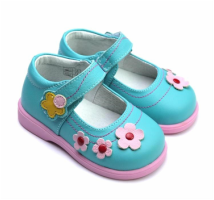 Not many things beat the absolute cuteness of a size 0 baby shoe. Be it on the shelf of your favourite baby store, in a gift bag at your stork tea or on a photo announcing the coming your bambino, you just can’t wait to try that pair of adorable mini-me ballet pumps or sneakers on those little newborn feet. When getting down to health issues, however, where do we set the boundaries for our little ones’ footwear? When babies are born, their feet are certainly not little replicas of a grown-up’s feet. All the little bones are still very soft and cartilaginous; no or minimal arching exists; and a newborn cannot selectively move his feet and toes seperately from each other. Muscle tone is low, and very little muscle strength has developed. Since your baby will not walk for the better part of his first year, shoes are there pretty much only to keep their feet warm. Footwear should thus be as comfortable as possible, and watch out for straps that may cut into the skin or laces tied up too tightly. Also, be sure that your baby’s shoes do not hinder him when he attempts to crawl – opt for softer, lighter shoes here. When your infant starts to walk, there is often a question of whether to shoe up to support the stability of the feet, or to not let him wear any shoes at all. A considerable amount of research has gone into this topic, and scientists have concluded that barefoot is the best way to go. Toddlers and young children walking barefoot for most of the time have shown improved balance, posture, muscle strength, range of motion of the foot joints, proprioception (continuous position orientation), coordination and general stability. Due to the sensory input that the child gets when walking bearfoot, muscle strength and tone start to develop and improve, leading to general improvement in instability and balance. Shoes may essentially “splint” the foot, inhibiting all joints to move through their full available range. Shoes also have an effect on stance length, walking speed and cadence, all which will affect a normal gait pattern. Obviously, we would not like our children to walk barefoot in public places, since they may be exposed to a number of harmful objects and/or substances (glass, dirt, etc.). The good news is that shoes are not an absolute taboo – just be clever when you buy. Some tips to take in mind when buying shoes for your child:
|
AuthorMarissa Fourie is a physiotherapist in Stellenbosch with a special interest in musculoskeletal conditions, pediatrics, and post/prenatal health. Archives
March 2016
Categories
All
|
||||||||||||||||||||||||||||||||||||||||||||||||||||||||
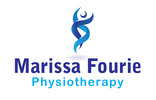
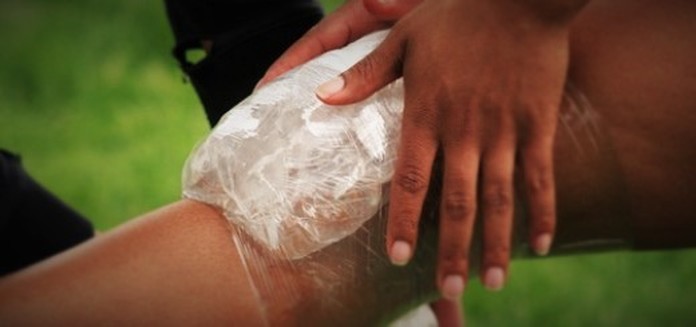
 RSS Feed
RSS Feed